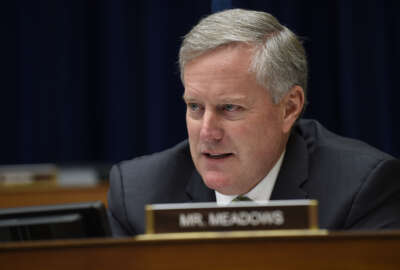
2020 Census may cost more than original estimates without full congressional funding
Former Census Bureau Director John Thompson says he still believes the 2020 count will be more efficient and cost effective than previous ones, but he urged...
The Census Bureau has pledged that the upcoming 2020 count will be the agency’s most efficient count yet.
But amid budget uncertainty and oversight concerns from Congress, former Census Bureau Director John Thompson said the agency can still meet that goal. It just may take more time, effort and money to get there.
“The Census Bureau is on track to put in place the systems they need to do the basic count more efficiently than it was done in the past,” Thompson told reporters July 25 at the National Press Club in Washington. “There is still time, although it’s going to cost more than I think they had initially estimated.”
Thompson’s prediction comes even though the bureau had a “particularly bad year” in 2017 and faces budget uncertainty for 2018.
Congress held agencies at fiscal 2016 funding levels for seven months of fiscal 2017 before it passed an omnibus spending package in early May.
The continuing resolution held the bureau at 2016 funding levels that were at least $100 million below the agency anticipated for fiscal 2017, Thompson said.
Ultimately, the CR forced the agency to push back some planning and testing activities. But Congress has appropriated the Census Bureau at lower levels than the agency’s budget request for at least six years.

“The Census Bureau stopped doing some tests on American Indian reservations and in Puerto Rico,” Thompson said. “They deferred significant work on the advertising program and on the partnership program. … They actually changed the way they do address canvassing, and they couldn’t develop — because they didn’t have the funds — the right kind of method to do more in-house address canvassing.”
When the agency lacks the resources to develop the IT systems it needs to automate activities in the census, the bureau reverts to the way it previously conducted key functions, Thompson said.
“Ultimately, if you don’t do the planning necessary, you’re going to have to do them in ways that were done in previous censuses,” he said. “The problem with that is that you’re not going to be able to automate them and they’re going to cost more money.”
The agency also delayed some canvassing and deferred some of the work to the field, which will ultimately cost more than any canvassing done in the office, Thompson said.
Thompson announced his retirement in May and left the agency at the end of June. He downplayed any controversy or skepticism about the timing of his departure.
His term ended Dec. 31, 2016, but the law allows for him to stay on for another year. The president could have also renewed him for another term.
Thompson said he wanted to stay at the bureau and provide some stability during the presidential transition to keep things moving forward as new political appointees took their places at the Commerce Department.
“We reached a point where it seemed as though I had done all I could do for the Census Bureau,” he said. “I had taken them as far as I could have taken them. I’d gone to a hearing and taken a little flack for the Census Bureau when they announced a slight cost overrun on one of their programs. It just seemed like it was the appropriate time to leave and to let the career staff at Census work with the new team at the Department of Commerce and that I just couldn’t add anything more to that work.”
His departure came amid congressional worry about scheduling, IT and cost overruns for the 2020 count.
In addition, the Government Accountability Office put the 2020 Census on its High-Risk list in 2017, citing concerns that the agency would meet its deadlines and stand up new IT systems under a tight budget.
Thompson said career Census employees sat down with GAO before he left to develop a root cause analysis of the main reasons behind the recommendations.
“In all honesty, they won’t get off the High-Risk list until after they’ve conducted a good census in 2020, or they’ve conducted a census in 2020,” Thompson said. “By the same token, when I was there in 2000, the 2000 Census went on the High-Risk list, and we actually appreciated that because it drew more attention to the fact that we needed the right support to get the job done.”
The 2010 census was the most expensive count in the bureau’s history. This time, the agency hopes that the off-the-shelf technology it’s modifying will save money for the 2020 count.
Thompson is optimistic that the administration will convince Congress to fund the bureau’s full budget request in 2019, the most important budgetary year for the agency before the 2020 count begins,
“You can’t push anything else,” he said. “At this point in 2019, if you don’t set up the infrastructure to do both the data collection and to do the partnership and advertising, a lot of that work has to happen in 2019.”
He’s also positive that leadership, including both new political appointees and career staff, will successfully make their case to Congress.
“[Commerce] Secretary [Wilbur] Ross, I know, is committed to a fair and accurate census,” Thompson said. “I fully believe that the 2019 budget is going to be what the Census Bureau needs.”
Copyright © 2025 Federal News Network. All rights reserved. This website is not intended for users located within the European Economic Area.
Nicole Ogrysko is a reporter for Federal News Network focusing on the federal workforce and federal pay and benefits.
Follow @nogryskoWFED





